Download our free opinion writing unit of study for primary classrooms to help you plan your writing instruction in the 1st, 2nd and 3rd grades.
Our free opinion writing unit of study contains anchor charts, lesson ideas and graphic organizers.
Our goal is to make your writing workshop planning easier and faster.
This is another free resource for teachers and homeschool families from The Curriculum Corner.
How to develop your own opinion writing unit of study
This opinion writing unit of study will fit best in primary classrooms. This includes mini-lessons, anchor charts, blank books and more.
While we know it is difficult to find a unit of study that is a perfect fit for your students, our goal is to help you get started.
By using the lessons and printables we have created, you can form your own unit that matches the needs and strengths of your students.
Begin your planning by reading through our unit.
Next, use the pieces that fit to form your outline. You can then fill in missing pieces using your own resources.
This unit is for use in a writer’s workshop format where mini-lessons, independent writing time and conferencing occurs every day.
As you move through the unit, students will be working on writing their own opinion pieces.
As your instruction builds on previous lessons and continues, students may choose to rewrite or revise pieces that were written at the beginning of the unit. You will have the opportunity to use that writing for discussions in your conferences with students.
Lesson Descriptions for your Writing Workshop
Lesson 1: Immersion
Immersion is a great way to introduce students to new reading and writing topics. Your goal is to help students to begin to see what opinion writing looks like.
Tell your students that they will be learning how to write their opinions. Ask them to share if they know/understand what the word “opinion” means. After a brief discussion, spend some time immersing your students in texts that deliver opinions and let them develop their own “noticings” about the texts.
We have provided a list of mentor texts for opinion writing within our materials list. You can use this to get your collection started.
I like to begin by dividing the class into small groups. Give each group a book or two and a graphic organizer to fill out. Gather your students and record their noticings on the blank anchor chart provided or use the one we have already filled in called “What is an Opinion?” to lead your discussion.
To make sure all students have developed a full understanding, continue the immersion the next day. You can read one of the books and fill out the “Our Noticings” graphic organizer together as a class.
Lesson 2: Fact Vs Opinion
This might be a perfect time to present some instruction on the difference between fact & opinion.
We have included some exit tickets within the resources provided here in case you want to quickly assess your students’ understanding of fact & opinion. One exit ticket option is more open-ended, but we have also provided two that are guided and specific.
If you are interested in a center activity to give your students more practice with fact vs. opinion, you might want to take a look at our Fact & Opinion Sorting Cards.
Lesson 3: Distinguishing Between Opinion and Persuasive Writing (Optional)
For further clarification of opinion writing you can share a mini-lesson that helps students understand the difference between opinion & persuasive writing. We have provided an anchor chart with the following ideas to get a class discussion started and here are some ideas that you can present:
What is Persuasive Writing – Picks one side of an argument with a goal of trying to convince others to agree with that argument. A writer would use evidence such as facts and statistics to persuade readers to understand and agree with their argument.
What is Opinion Writing – States an opinion and uses examples to show why that opinion is held. A writer would use background personal experience and logic to help readers understand their opinion, but without necessarily trying to convince others to change their own beliefs.
Lesson 4: An Opinion Needs a Good Reason
We want to helps students understand that their opinions need to be supported with at least one reason why they have them.
At this age many children are likely to simply give the response of “Well…because!” when asked why they think the way they do about something.
For this lesson we have a graphic organizer called “An Opinion Needs a Good Reason” that is meant to be modeled with the entire class.
For each opinion, talk with students about good reasons that someone might use to support each one.
You will find a follow up activity for student practice. Cut apart the half sheets called “A Reason for My Opinion” and pass them out to each student.
Give a few minutes for students to think of answers and then gather them into a group. Have each student read their sentence frame aloud and add their personal thoughts.
Lesson 5: Providing More Than One Reason for Opinions
Depending upon the age of your students, you may want them to supply more than one reason for each opinion.
There are four practice pages on different topics that can help writers get started. Each page has an opinion at the top and four boxes below for brainstorming.
You can model and then have students complete another page independently or in small groups.
Another extension for this activity provides three pages of strips of paper for sorting.
The first page contains opinions. The next two pages are support for those opinions.
Students will work to match the opinions with the reasons.
This work can be done indepdently or in small groups at a center. If using at a center, you might choose to laminate the pages for durability.
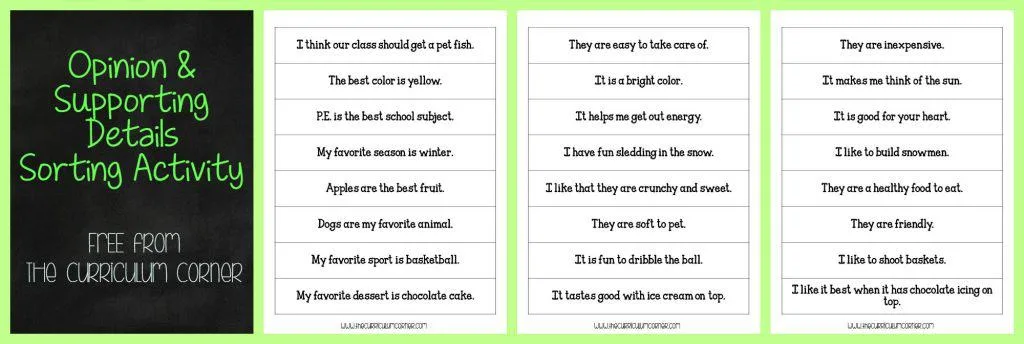
Lesson 6 & 7: Opinion Sentence Starters & Transition Phrases
Giving students appropriate wording to use for opinion writing can be a great tool. It might help with starting a piece or with even with the flow of writing.
You will find two anchor charts that you can share, discuss and model with your students.
Use the charts that fit your class as you model writing in front of your class. Be sure to highlight how the anchor charts help you with word choice as you go.
Lesson 8: Choosing a Topic & Planning Your Writing
This lesson will help students plan our their opinion writing.
They may choose a topic that they have already begun to write about or select something new.
You will find four different planning organizers called “Organizing My Thoughts” that you can model using for your students.
Once you have modeled your planning for your students, they can begin to select topics for a piece of opinion writing. You can give students the organizer you modeled or allow them a choice.
You will want to conference with students as they plan and look at their pages to help provide the guidance and support that each student needs.

Additional Resource: Writing Task Cards – This activity might fit at a center or during small group instruction.
For this activity we have provided ten cards with pre-programmed topics (ex: fish vs. dog) that you can use alongside the “Organizing My Thoughts” organizers.
Once a card is chosen, students will need to form an opinion on the topic on the card and think through good reasons for that opinion to use in their writing.
These cards might also be helpful to students who are struggling with choosing a topic to write about.
Lesson 9: Publishing
Once students have had the opportunity to practice their opinion writing, you will If you want your students to take the next step. They are now ready to select a favorite piece for revising and publishing.
Our download contains two booklets you can use for publishing. Some students prefer blank books. Others prefer lined paper.
Finally, there is an opinion writing checklist students can use to check their writing before making their final changes.

Lesson 10: Writing Celebration
As always, finish off your unit with a fun writing celebration.
You might invite parents, another class or other special adults from your building to come in and have your students share their writing.
This can be done in small private conversations, but you can also have students who are willing to read their pieces in front of the class.
You can use our “Congrats Author!” to share with your students if you wish.
Wrapping it all Up: My Favorite Snack
One fun idea you might want to do is to have three different types of snacks available to your students and guests. On your board (or on posters) put the names of the three different snacks and provide Post-Its to write on.
Before the celebration ends, have each student and guest choose their favorite of the three snacks and write their reason for their opinion on a Post-It to place on the board or poster.
At the end your class can discuss the reasons that were given for the opinions on the snacks.
If you are looking for resources found within the old version of the post, we have left resources that we did not recreate and incorporate into this unit below:
You can download this free writing unit of study here:
As with all of our resources, The Curriculum Corner creates these for free classroom use. Our products may not be sold. You may print and copy for your personal classroom use. These are also great for home school families!
You may not modify and resell in any form. Please let us know if you have any questions.

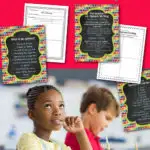
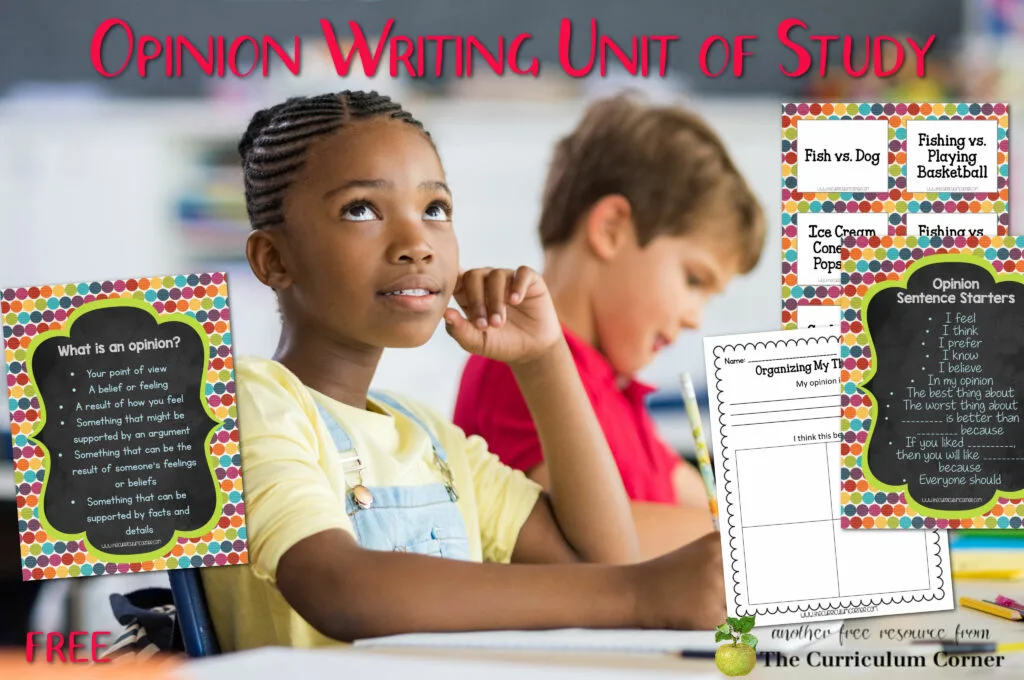
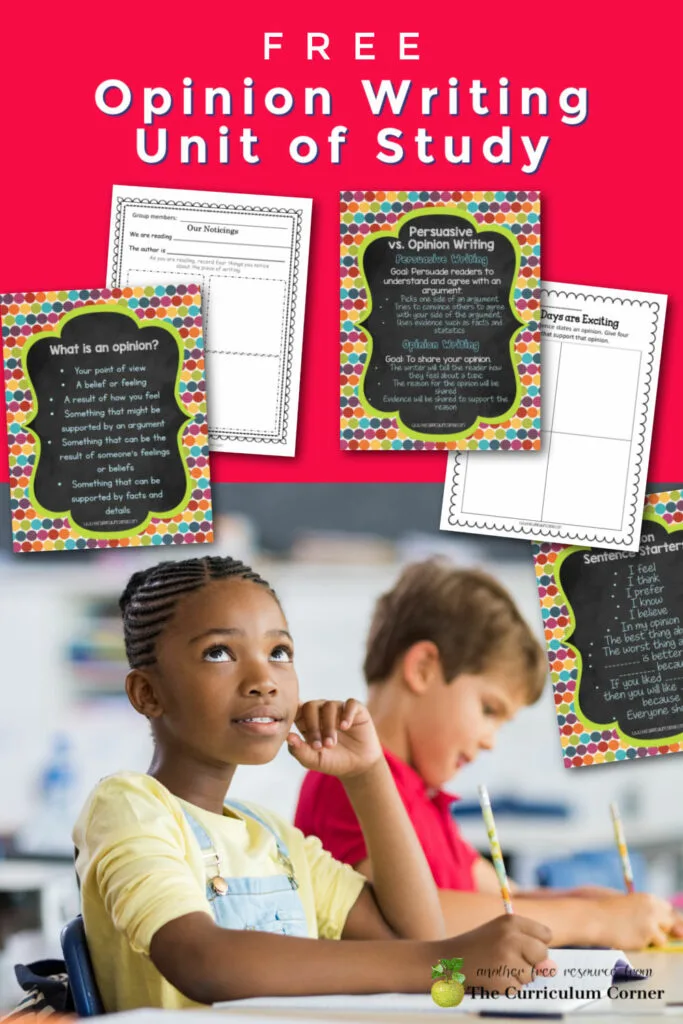
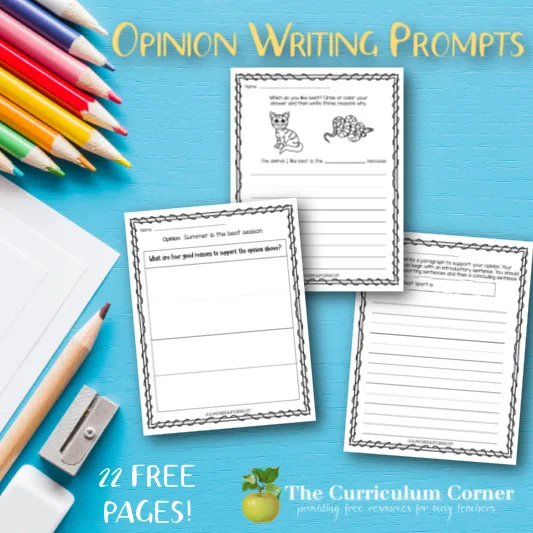
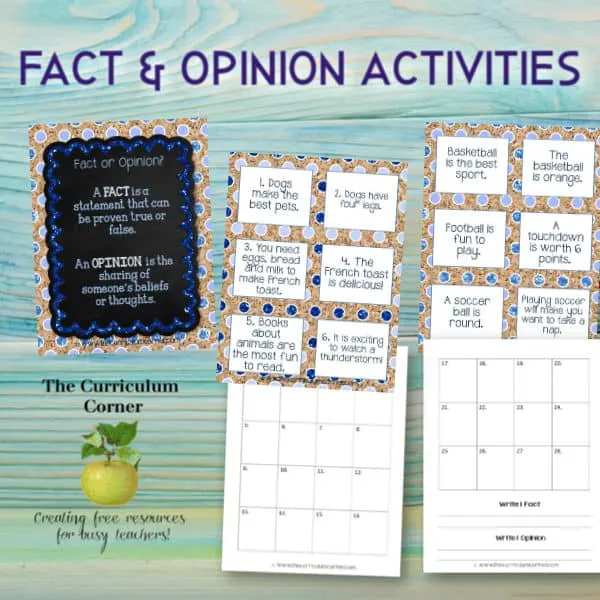
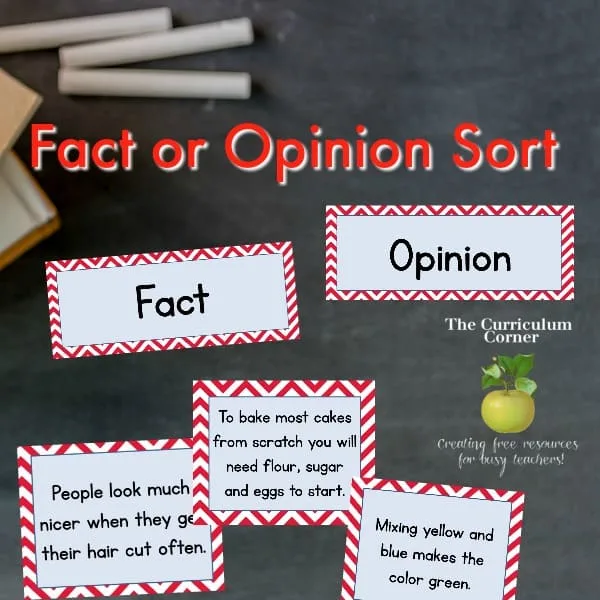
20 Prompts for Opinion Writing That Motivate Kids - Vibrant Teaching
Wednesday 2nd of March 2022
[…] Opinion Writing Ideas and Resources […]
Opinion Writing Prompts - The Curriculum Corner 123
Monday 3rd of May 2021
[…] Vocabulary Words ← Previous Opinion Writing Ideas & Resources Next → Click here to cancel […]
Persuasive Writing Unit of Study - The Curriculum Corner 123
Friday 16th of April 2021
[…] Opinion Writing Ideas & Resources ← Previous Click here to cancel reply. […]
Louise
Sunday 3rd of March 2019
I really appreciate your simple and clear graphic organizers. Although it is clear that the materials are meant for lower grades, my 5th graders love the simple prompts, like "Video Games vs. Water balloons." I have the students write their choices on white boards as a quick introduction to opinion writing. I use the detail support prompts, like "Rainy Days Are Fun," to begin a discussion about whether all people have the same opinions and how to make sure people understand your opinion (e.g. providing good details). The graphic organizers are also good support for my EL and RSP students.
Jill & Cathy
Monday 4th of March 2019
Hi Louise and thanks so much for providing your ideas for our other intermediate followers! And we are so happy that you are finding this resource helpful for your own 5th graders! Good luck to you!
Kaitlin Aalberts
Monday 31st of July 2017
Hello! I am so excited to have stumbled across this! Is it suitable for 3rd and 4th graders, or do you think it might be too simplistic for them? I am still a fairly new teacher and I have had a hard time trying to fully teach this concept! Thank you
Jill & Cathy
Monday 14th of August 2017
Hi Kaitlin! Welcome to teaching! As in all resources, you will need to adjust the delivery and content for the levels and needs of your students. This post was intended for use in primary classrooms, but with a little differentiation we believe it could easily be used with 3rd and 4th graders. We suggest getting started and then think about how your students are doing. Do they seem to need more challenge or is the content working and meeting your instructional goals? Good luck!